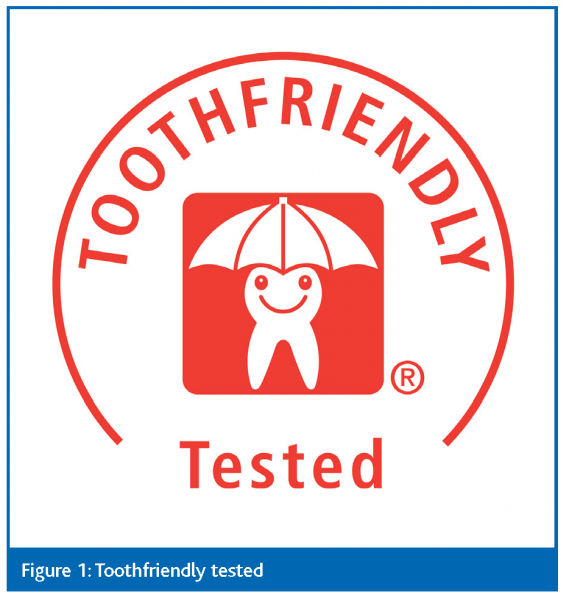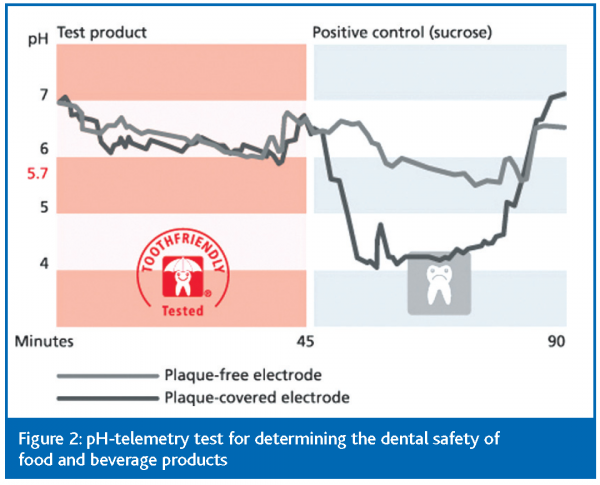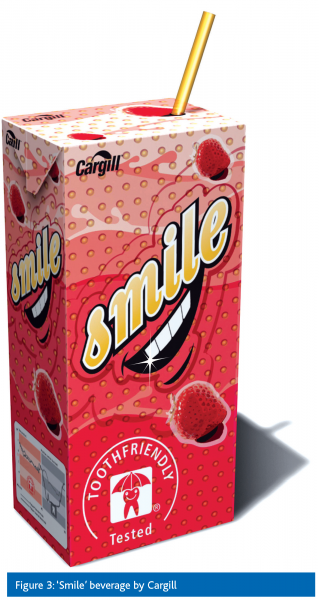Formulating toothfriendly beverages
- Like
- Digg
- Del
- Tumblr
- VKontakte
- Buffer
- Love This
- Odnoklassniki
- Meneame
- Blogger
- Amazon
- Yahoo Mail
- Gmail
- AOL
- Newsvine
- HackerNews
- Evernote
- MySpace
- Mail.ru
- Viadeo
- Line
- Comments
- Yummly
- SMS
- Viber
- Telegram
- Subscribe
- Skype
- Facebook Messenger
- Kakao
- LiveJournal
- Yammer
- Edgar
- Fintel
- Mix
- Instapaper
- Copy Link
Posted: 11 August 2006 | Albert Bär, Toothfriendly International, Basel, Switzerland | No comments yet
Ongoing discussions about diet and health; calls of politicians and consumers for healthier foods and debates about the benefit of advertising bans and restrictions of distribution, for example in schools, particularly threatens the manufacturers of beverages and confectionery. Such products are often loaded with sugar and are, therefore, destined to be the culprits in newspaper articles about obesity, diabetes and poor dental health.
Forward looking companies launched sugar-free and energy-reduced (‘lite’) confectionery and beverages many years ago. In the candy and chewing gum market, the sugar-free segment is actually the only one that consistently produces positive growth rates. With the positioning of chewing gum as a product that not only does not harm teeth but in fact promotes dental health, this type of confectionery has even acquired a positive health image. Following this example, dental health has now become a sales argument for certain candy products which are marketed with the ‘toothfriendly’ claim (Figure 1) and/or claims about a plaque-neutralising, remineralising or tooth-whitening action.
Ongoing discussions about diet and health; calls of politicians and consumers for healthier foods and debates about the benefit of advertising bans and restrictions of distribution, for example in schools, particularly threatens the manufacturers of beverages and confectionery. Such products are often loaded with sugar and are, therefore, destined to be the culprits in newspaper articles about obesity, diabetes and poor dental health. Forward looking companies launched sugar-free and energy-reduced (‘lite’) confectionery and beverages many years ago. In the candy and chewing gum market, the sugar-free segment is actually the only one that consistently produces positive growth rates. With the positioning of chewing gum as a product that not only does not harm teeth but in fact promotes dental health, this type of confectionery has even acquired a positive health image. Following this example, dental health has now become a sales argument for certain candy products which are marketed with the ‘toothfriendly’ claim (Figure 1) and/or claims about a plaque-neutralising, remineralising or tooth-whitening action.
Ongoing discussions about diet and health; calls of politicians and consumers for healthier foods and debates about the benefit of advertising bans and restrictions of distribution, for example in schools, particularly threatens the manufacturers of beverages and confectionery. Such products are often loaded with sugar and are, therefore, destined to be the culprits in newspaper articles about obesity, diabetes and poor dental health.
Forward looking companies launched sugar-free and energy-reduced (‘lite’) confectionery and beverages many years ago. In the candy and chewing gum market, the sugar-free segment is actually the only one that consistently produces positive growth rates. With the positioning of chewing gum as a product that not only does not harm teeth but in fact promotes dental health, this type of confectionery has even acquired a positive health image. Following this example, dental health has now become a sales argument for certain candy products which are marketed with the ‘toothfriendly’ claim (Figure 1) and/or claims about a plaque-neutralising, remineralising or tooth-whitening action.
The soft drinks industry has, for a long time, thought that by providing sugarfree (‘lite’) beverages, the consumers have been given a sufficiently healthier choice and that more action in this direction would not be needed. However, the still relatively small market share of lite beverages and more recent discussions about tooth erosion that may be caused by the acidic beverages, demonstrate that more is needed for generating a positive health image of soft drinks. Attempts to achieve this by adding functional ingredients such as vitamins and minerals, prebiotic fibers or allegedly health-giving herbal extracts, will probably remain futile as long as there remains concern about the health aspects of the basic ingredients of the beverage, i.e. sugar(s) and acids.
Dental caries
Consumers, at least in the developed countries, are usually well informed about the association between a frequent consumption of sugars and the formation of tooth decay. Although the incidence of caries has decreased mainly due to the regular use of fluoridated toothpaste, this association still exists.
Dental erosion
Food acids, if consumed frequently and in high amounts, can have a direct demineralising effect on the tooth surface which may develop into dental erosion, i.e. the visible disappearance of the surface layer of the tooth enamel. In addition, the frequent consumption of acidic foods favours the growth of acid-tolerant micro-organisms in the dental plaque and thereby increases its cariogenic activity (Svanberg, 1980).
Furthermore, excessive consumption of food acids may not only expose teeth to a risk; but may also have other adverse health effects. It may, for example, affect the body’s calcium balance and the incidence of heartburn (Heaney & Rafferty, 2001; Feldmann & Barnett, 1995).
The German Federal Institute of Risk Assessment recently warned about the risk of high levels of citric acid and other food acids in confectionery and beverages on dental health (BfR, 2004/2005). The UK Committee on Toxicity issued a similar statement which reminded food operators of the general food safety clause and ended with the recommendation that food manufacturers should be required to provide evidence of the safety of acid sweets to the Competent Regulatory Authorities (COT, 2004).
Assessing dental safety of foods by pH telemetry
The dental safety of foods, in terms of their cariogenic and erosive potential, is best evaluated by means of a standardised pH telemetry test. In this test, the cariogenic potential is determined in vivo by means of a plaque-covered, indwelling electrode. The erosive potential is measured by means of a plaque-free electrode (Imfeld, 1983). Foods that do not lower the pH of dental plaque below 5.7 (due to acid formed by the fermentation of sugars and other carbohydrates) are considered to lack a significant cariogenic potential. Foods which upon normal consumption do not expose the teeth to more than 40 mmol H+ x min are considered not to have significant erosive potential. If both criteria are met, the product is accepted to be ‘toothfriendly’ and may be distinguished by the ‘Happy Tooth’ certification mark which serves as a sign post to dentally safe products for the health conscious consumer (www.toothfriendly.org)
Following a standard operation procedure, such tests can be performed at the university dental institutes of Zürich (Switzerland), Erfurt (Germany) and Sendai (Japan).
In the confectionery market there already exists many brands of chewing gum, hard candies, toffees and mints that have successfully passed these tests and exhibit the ‘Happy Tooth’ logo for quick recognition. However, toothfriendly beverages are still in development and have not yet hit the market. Young women who attempt to drink at least two liters of liquid every day to stay slim and healthy, have, therefore, little chance of finding a ‘toothfriendly’ beverage and have no other choice than to drink plain water, mineral water or home-brewed tea.
The challenge for beverage formulators
Formulating a toothfriendly beverage means creating a product that does not contain unacceptable amounts of the following:
(a) Carbohydrates that can be fermented by the dental plaque
(b) Food acids that directly attack the tooth surface
There is no precise limit for what constitutes an acceptable level of fermentable carbohydrates. However, plaque pH-telemetry has shown that even low levels of fermentable sugar can lead to a drop of plaque pH below the threshold value of 5.7 after consumption of a serving of the drink by sipping over a longer period of time (cumulative effect). It follows from this that only ‘toothfriendly’ sweeteners may be used to bring the sweetness to the desired level and that fruit extracts may be used only very sparingly, if at all. Also, dairy products may not be used if they contain too much lactose in the final product.
It is also not possible to define an acceptable level of acid because the neutralisation of this acid by saliva, which flows at a higher rate after consumption of an acidic drink, has a significant impact on the pH of the oral cavity.
Only preliminary tests of the prototype recipes can, therefore, guide the beverage formulators on the way to a toothfriendly product.
Sweetener systems
All intense sweeteners that are authorised for use in beverages may be used for formulating toothfriendly products. Although not all of them have been tested specifically, it is clear that they will not have an impact on plaque pH at the required low levels of use.
Among the bulk sweeteners, the choice is much more limited. Except for the polyols, which are the key ingredients for the formulation of toothfriendly confectionery, only isomaltulose and D-tagatose were found to not be fermentable to a significant extent. Both isomaltulose and D-tagatose are authorised in the EU for use in beverages. However, the use of D-tagatose at a concentration of more than 1 per cent would require the application of an information statement regarding potential laxative effects. The use of polyols in beverages is not authorised in the EU. Unfortunately, this will probably be the case for erythritol which would otherwise have interesting properties for use in beverages; is toothfriendly and has a good intestinal tolerance (de Cock & Bechert, 2002).
Therefore, it is likely that a toothfriendly beverage would be sweetened, at least in the EU, predominantly with intense sweeteners (except perhaps for flavoured mineral water which only needs a little sweetness that could easily be provided by isomaltulose and/or D-tagatose). The use of one or both of these sugars would have the additional benefit of an improved mouthfeel which otherwise would have to be generated by the addition of non-fermentable, i.e. toothfriendly, oligo- or polysaccharides such as resistant dextrin (e.g. Nutriose FB) or polydextrose.
A demonstration product of an isomaltulose containing beverage has been presented by Cargill recently (Figure 3). This strawberry-flavoured product has successfully passed the standard tests for lack of cariogenic and erosive potential and, therefore, carries the ‘Happy Tooth’ mark. The product has been designed for being purchased by mothers for consumption by their children. The product contains added calcium in a sufficient amount for permitting the application of additional claims.
Acid systems
The erosive potential of a beverage is influenced by its pH and the buffering capacity of the applied acids.
Citric acid and malic acid, which are used most often in beverages, have a high buffering capacity between the pH of the beverage (<4.5) and the pH above which there is no longer erosive potential (>5.7). The neutralising effect of saliva may, therefore, not be sufficient to bring the pH of the oral cavity back into an acceptable range fast enough.
For the formulation of a toothfriendly beverage, acids with no or low buffering capacity in the critical range are required. Carbonic acid, phosphoric acid, sodium hydrogensulfate and lactic acid correspond to this criterion. However, even if these acids are applied, the pH of the beverage should not be too low. In fact, the higher it is, the more likely the product will be successful in the test for erosive potential. This, however, may have implications for the microbiological stability of the product, except if aseptic packaging can be guaranteed.
Flavour systems
Except for fruit extracts, which may contain unacceptably high levels of fermentable carbohydrates, any flavour may be used for formulating a toothfriendly beverage. In case of doubt, an in–vitro test is available in which the fermentability of a flavour preparation can be checked quickly and at low cost using a biofilm model.
The range of flavours that may reasonably be considered is limited, however, by the restrictions on the type and amount of acid. Strong citrus flavours, which are expected by the consumers to be associated with high sweetness and correspondingly high acidity, can probably not be used. Ideal flavours would require little or no acid such as green tea, herbal extracts, mint or flower flavours (rose, hibiscus, orange etc.). For beverages positioned for children, banana, coconut and chocolate flavours may be considered, if necessary in combination with a slightly acidic fruit note (e.g., banana/strawberry).
Flavoured mineral water
Carbonated mineral water may be a particularly suitable base for creating a flavoured toothfriendly beverage which offers more taste than plain mineral water, yet does not dominate the taste buds with high levels of sweetness and acidity. Particularly health conscious consumers who drink two liters of liquid per day in countless small sips, may look forward to such products which are light not only in calories but also in taste. Such consumers may be particularly receptive to the toothfriendly claim and for more sophisticated flavours particularly if they are linked to a perception of health (e.g. green tea and aloe vera).
Outlook
The wake-up call to the beverage industry for producing healthier products has been launched. First attempts to improve existing products by adding functional ingredients are made. However, as with the confectionery industry, ingredient-related health claims will only be credible if the product is not based on ingredients with a questionable health track record.
A successful way of informing consumers about the healthy basic composition of a beverage, and of keeping it out of discussions on nutritional profiles, is by positioning it as ‘Toothfriendly’, as shown by the example of toothfriendly confectionery.
However, the formulation of a Toothfriendly beverage poses some challenges – notably with regards to the type and level of food acids that may be used. New flavour trends in beverages are, however, fully compatible with a lower acidity and may support the formulation of Toothfriendly drinks. Important targets for such products are the young adults with a regular high liquid intake as well as children whose dental health deserves particular attention.






References
Bundesinstitut für Risikobewertung (2004/2005). Hohe Gehalte an Zitronensäure in Süsswaren und Getränken erhöhen das Risiko für Zahnschäden. Aktualisierte Stellungnahme Nr. 006/2005 des BfR vom
9. Januar 2004. http://www.bfr.bund.de/cm/208/ hohe_gehalte_an_zitronensaeure_erhoehen_das_risiko_fuer_zahnschaeden.pdf
Committee on Toxicity (2004). COT Statement on adverse reactions to acid sweets. www.food.gov.uk/multimedia/pdfs/acidsweets.pdf
de Cock P. and Bechert C.-L. (2002). Erythritol. Functionality in noncaloric functional beverages. Pure Appl. Chem.: 74 (7): 1281-1289.
Feldman M. and Barnett C. (1995). Relationships between the acidity and osmolality of popular beverages and reported postprandial heartburn. Gastroenterology, 108: 125-131.
Heaney R.P. and Rafferty K. (2001). Carbonated beverages and urinary calcium excretion. Am. J. Clin. Nutr.: 74: 343-347.
Imfeld, T. Identification of low caries risk dietary components. Monographs in Oral Science (H.M. Myers, ed.) Vol. 11 Karger, Basel, 1983, 195 pp.
Svanberg M. (1980). Streptococcus mutans in plaque after mouthrinsing with buffers of varying pH value. Scand. J. Dent. Res.: 88 : 76-78.









